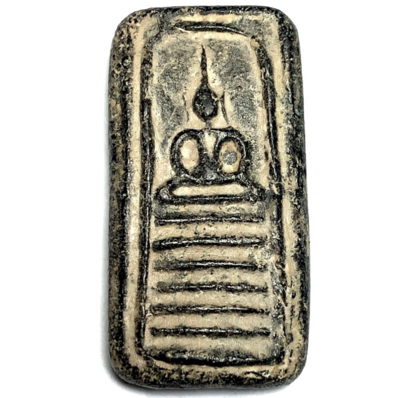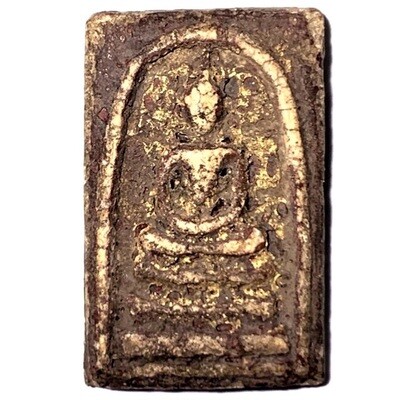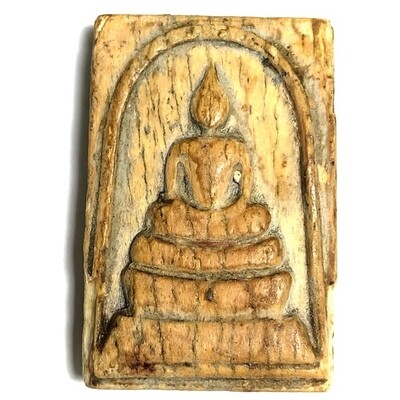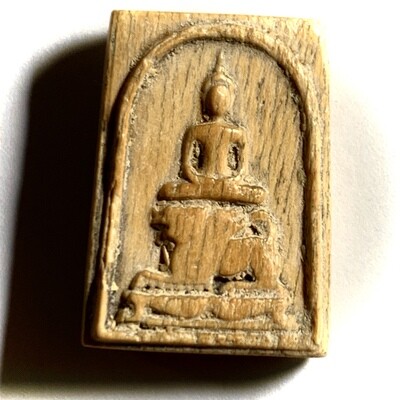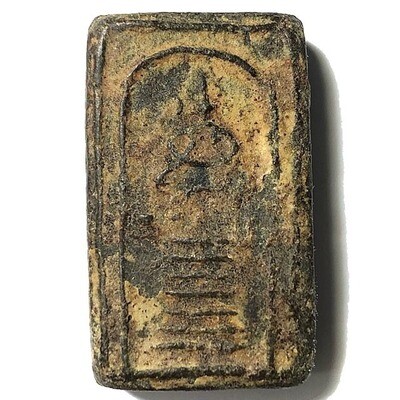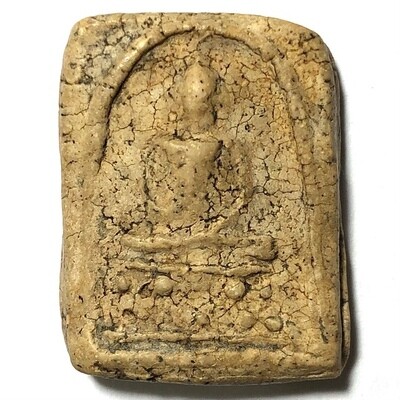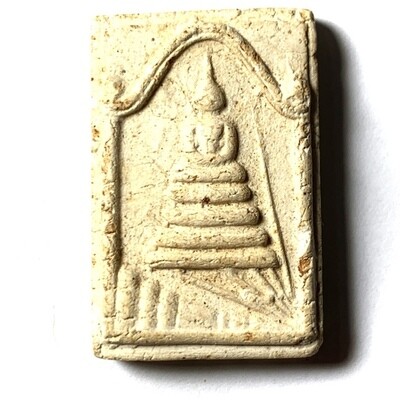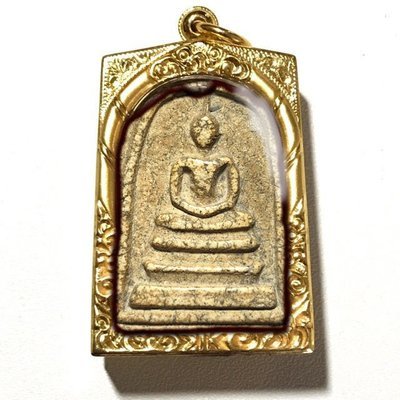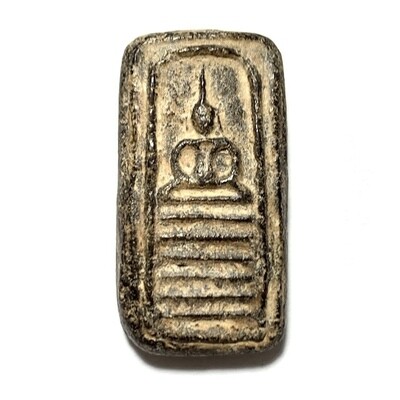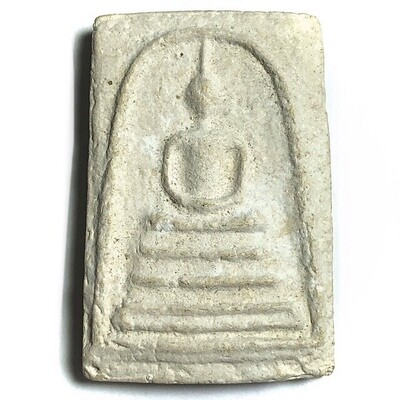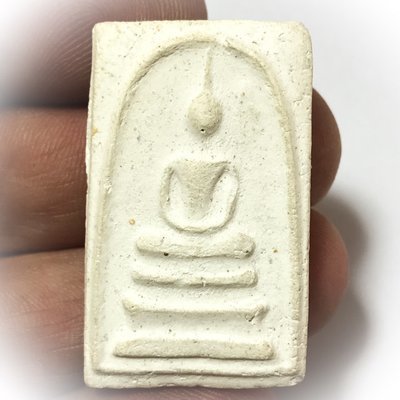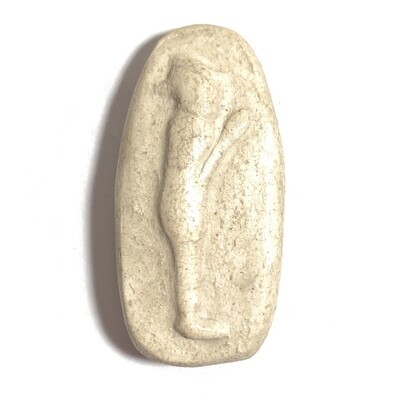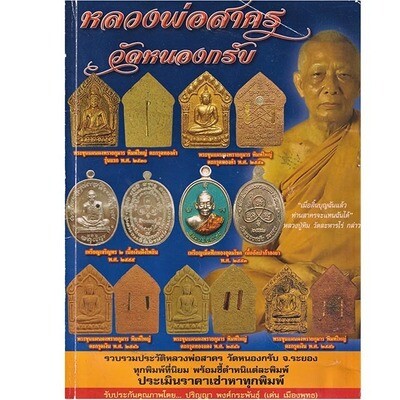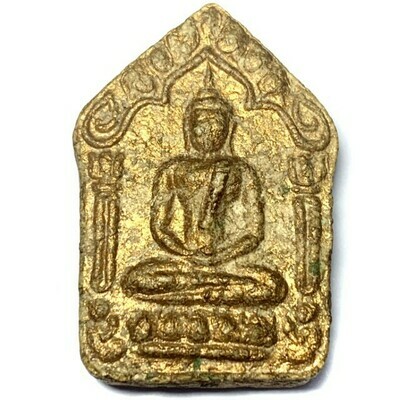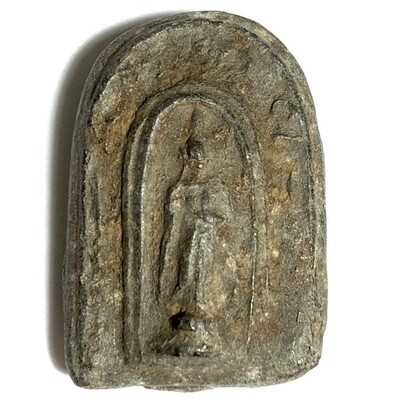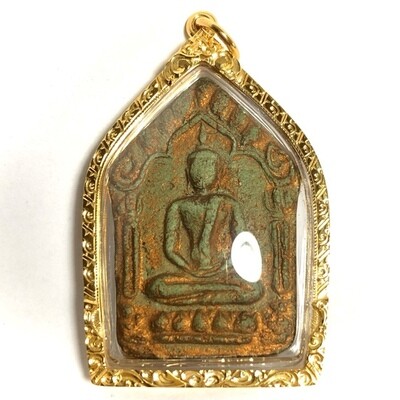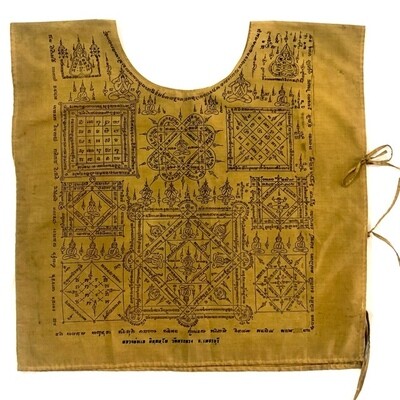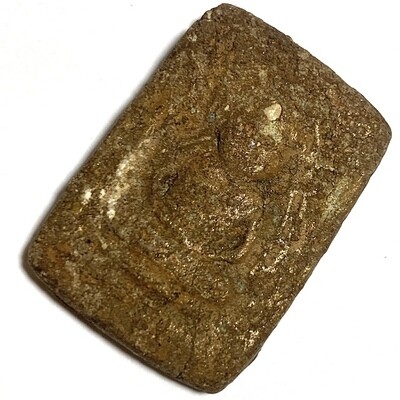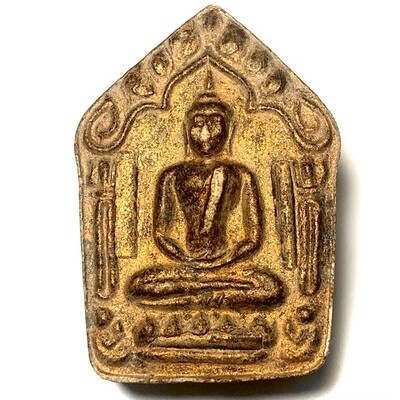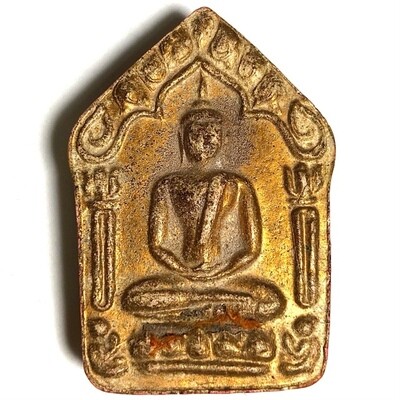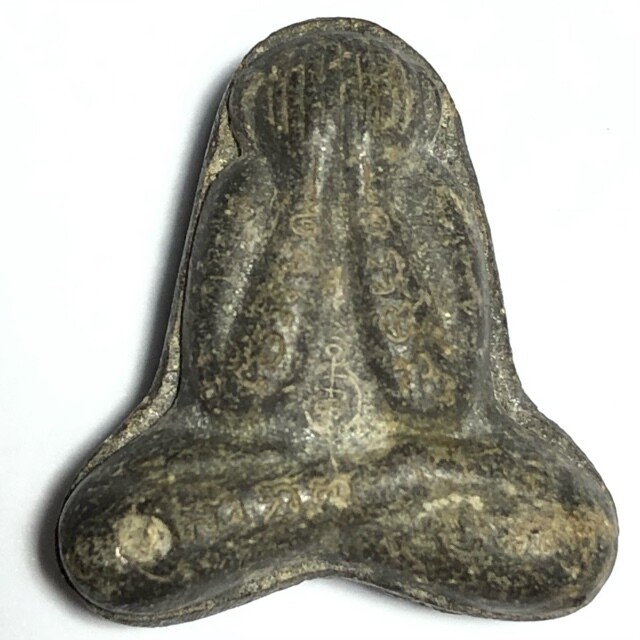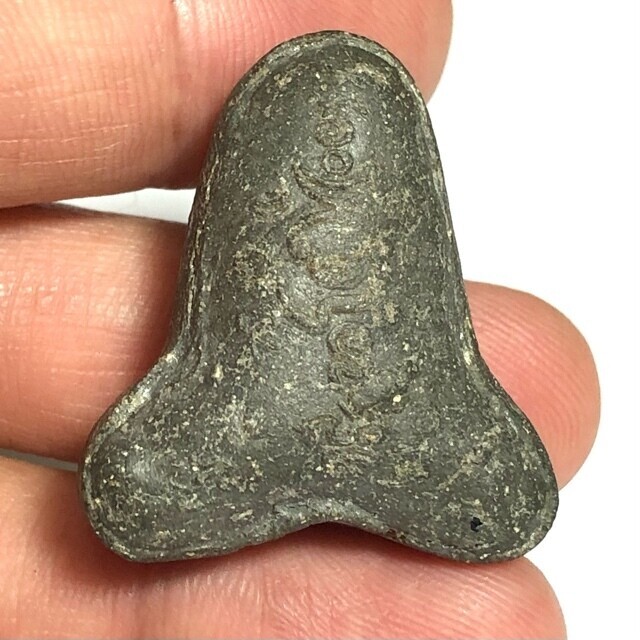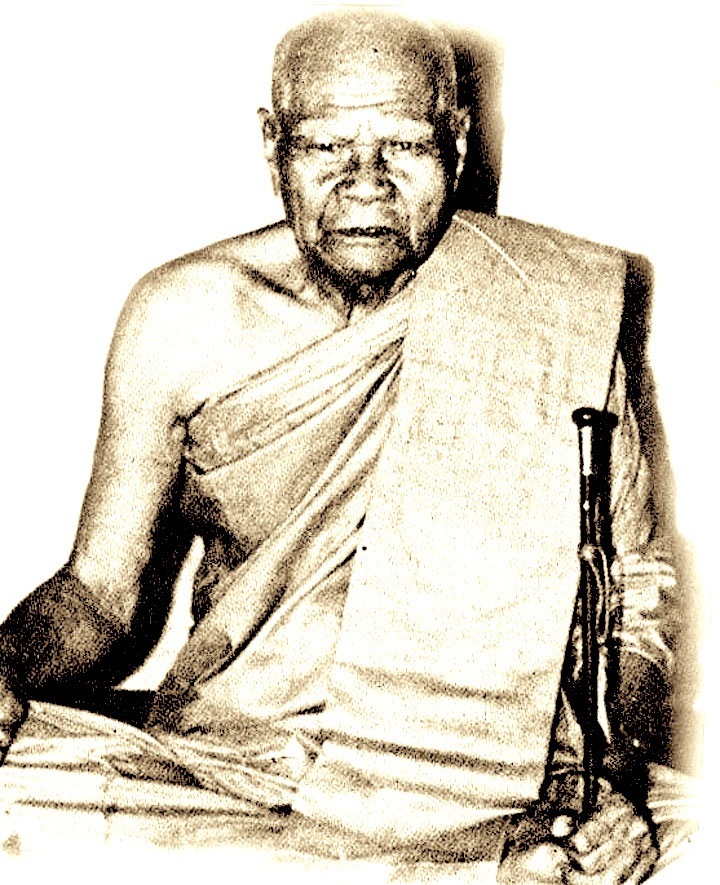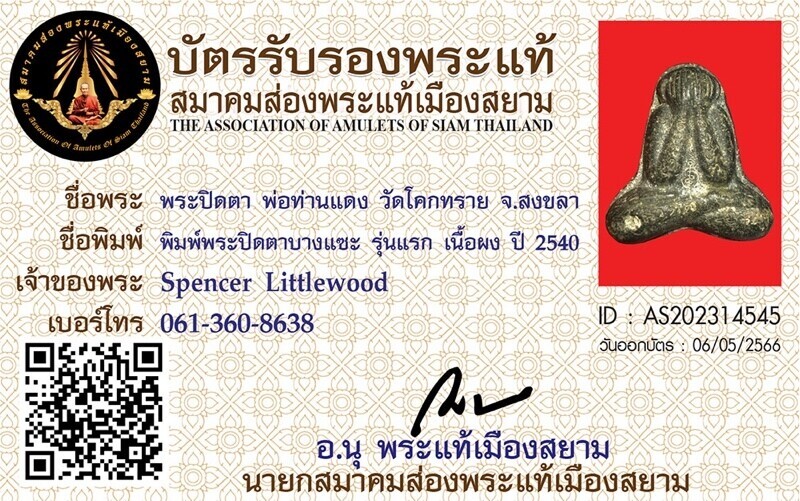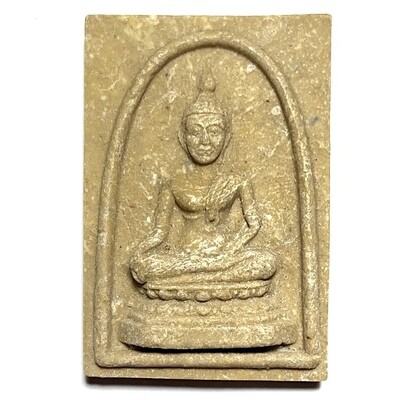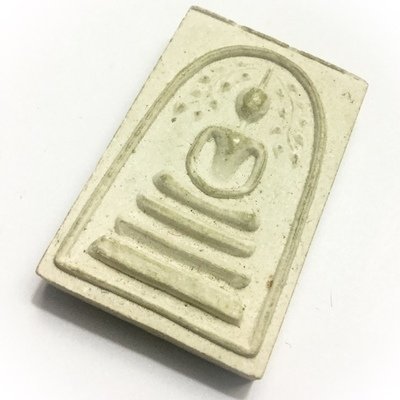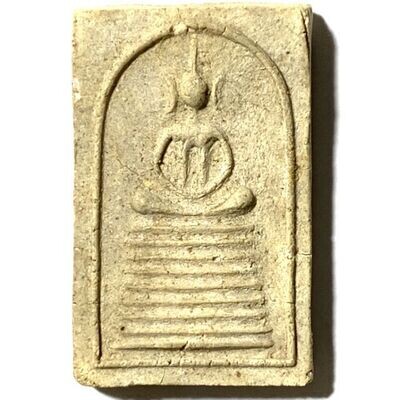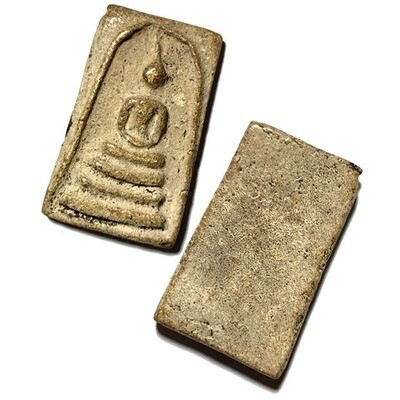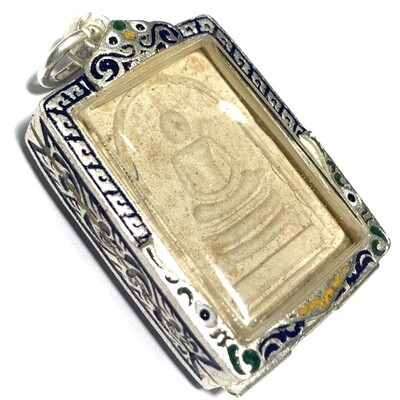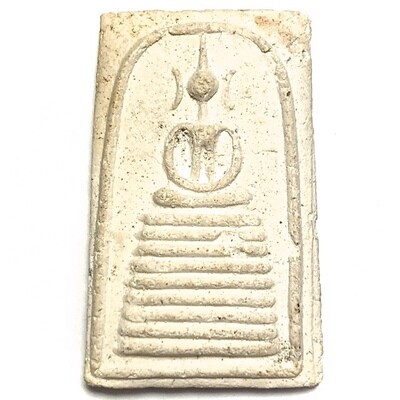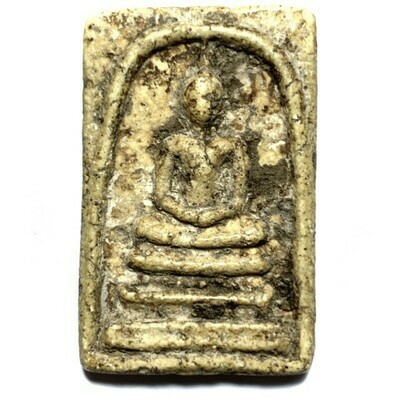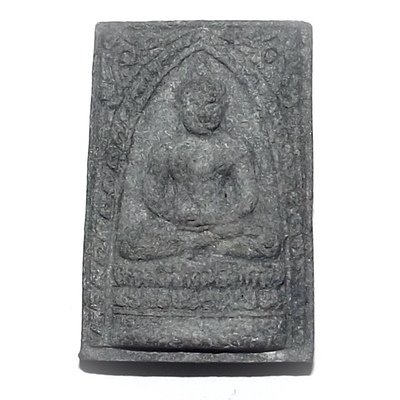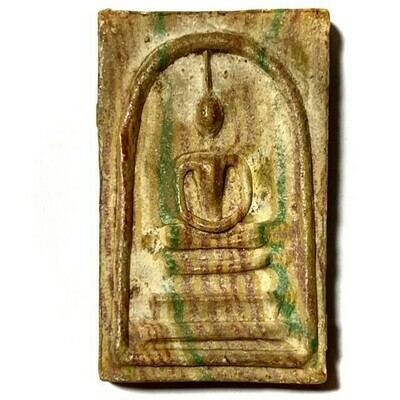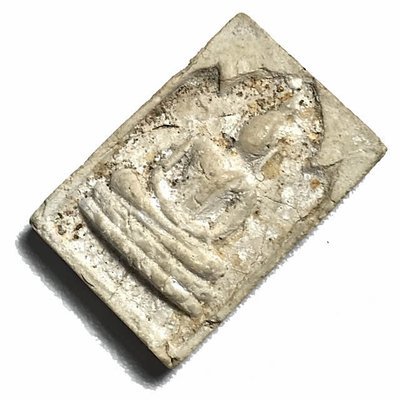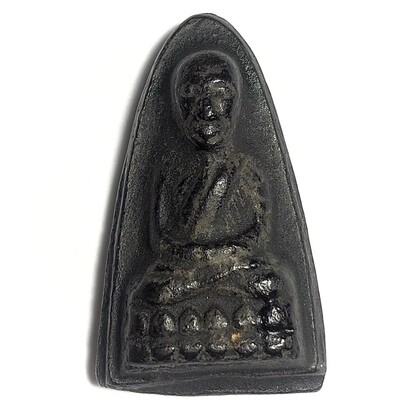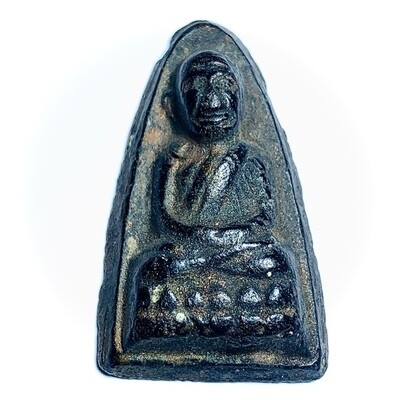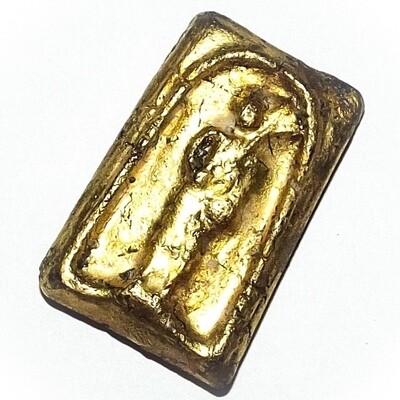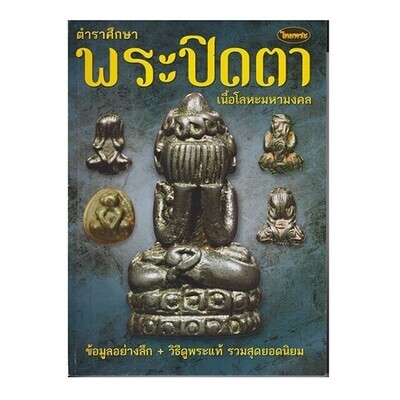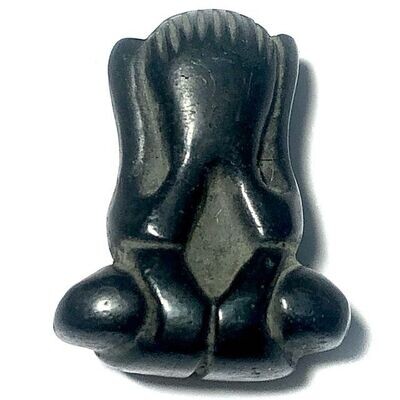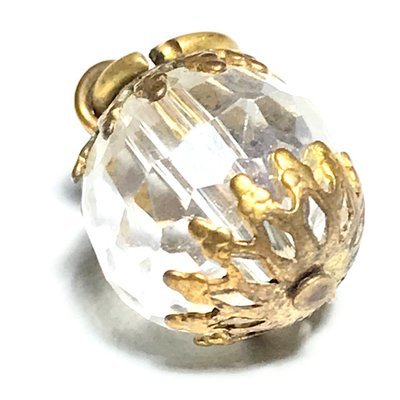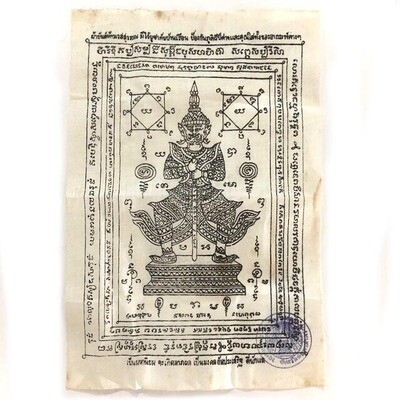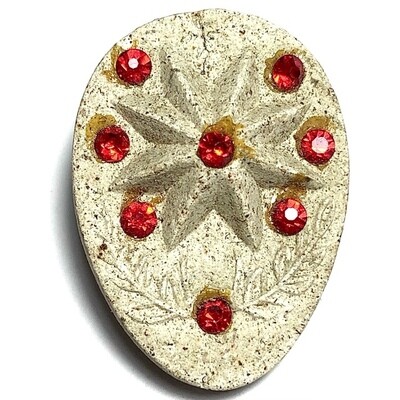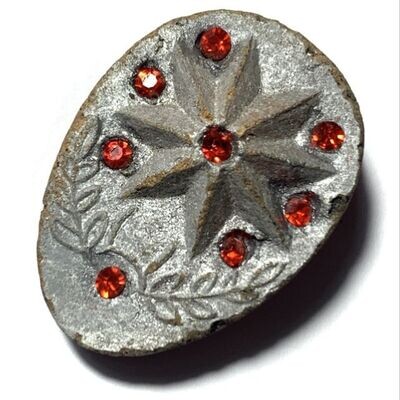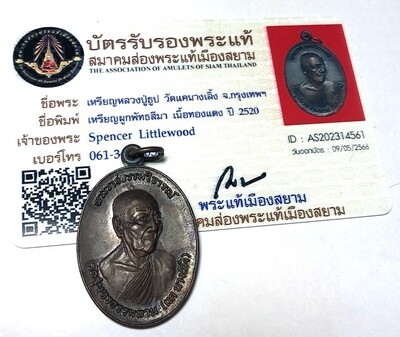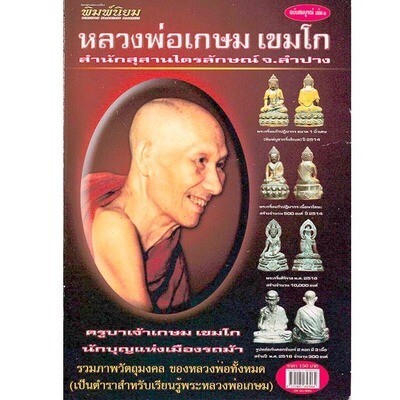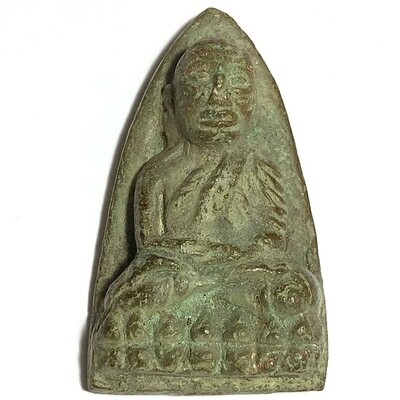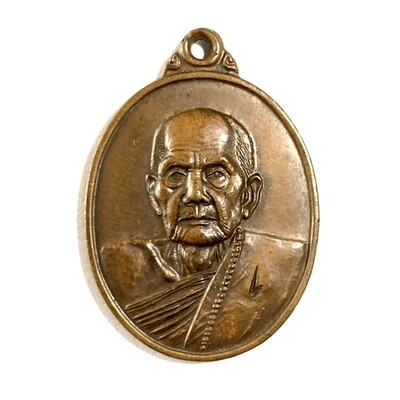Presenting a tiny but powerful and rare classic amulet from one of the Great Khao Or Masters of the 20th Century, Rian Glom Lek Hlang Chedi 2505 BE Nuea Tong Daeng Miniature Guru Monk Coin Por Tan Klai Wajasit
This Sacred amulet of the Great Khao Or Master of Nakorn Sri Tammarat, Master of Wat San Khan and Wat Pratat Noi, is a very rare amulet from Por Tan Klai’s 2505 BE Blessing Ceremony Edition, and is considered a ‘Jaek mae Krua’ type amulet (meaning ‘give to the kitchen maids and temple helpers’), which is suitable not only for men, but due to its miniature size, a perfect amulet for ladies or children to wear.

Rian Glom Lek 2505 BE Por Tan Klai Wajasit Wat Suan Khan
The 2505 BE edition of amulets of Por Tan Klai, is a highly preferred edition, which saw his famous ‘Rian Glom’ round Monk coin amulet with Chakra released, The Rian Glom Lek Hlang Chedi, and the Roop Tai Por Tan Klai Guru Monk Blesséd Photographamulets such as look om chan hmak and ya sen tobacco balls, and sacred powder amulets of various models.
A very rare and highly prized amulet for the devotees of Por Tan Klai to associate with his image and pray to him with a blessed image of the Guru, and the Chedi Relic Stupa on rear face for Buddhanussati and Marananussati. A powerful and Sacred amulet which has passed through the hands of the Guru and been blessed by him.
Por Tan Klai was one of the Top Guru Master Monks of the Last Century, and is considered one of the Four Great Masters of the Previous Generation of Lineage Masters of the Khao Or Southern Sorcery Lineage.
Kata Bucha Por Tan Klai
Pra Pid Ta Nuea Bailan Pim Tok Rajah Wat Bang Sae 2540 with Certificate Por Tan Daeng (Luang Por Kron Lineage)
First edition certificated amulet of the Great Malaysian Monk Por Tan daeng, of Wat Koke Sai in Songkhla, this exhibit being the 1st edition 'Pim Wat Bang Sae' model, which emulates the style of the Pra Pid Ta of the Great Malaysian Monk Luang Por Tan Kron, of Wat Bang Sae. Released in the year 2540 BE, the amulet is made from Bailan Parchment powders, and is empowered with the ubiquitous Khom Aglkhara spells in ancient Khmer Sanskrit, used for the empowerment of this particular Wicha, used by Luang Por Kron for his Pra Pid Ta amulet.
Pra Kroo Aphai Sopon (Por Tan Daeng), of Wat Khok Sai, formerly the Abbot of Chana District, Songkhla Province, is a born indigenous citizen of Kelantan in Malaysia Por Tan Daeng is a direct disciple of Luang Por Kron, Bang Sae Temple, Malaysia. Por Tan Daeng has made many renowned and highly revered amulets over the years, which are all rare, due to him being the Looksit Aek first apprentice of the Great Luang Por Kron, and his Mastery of the continuance of the Magical Wicha of the Phra Pid Ta Wat Bang Sae (Malaysia)
The Pra Pidta Bang Sae, was made in various types of Muan Sarn Sacred Powders and Pim (models). They are considered powerful magical amulets, and a perfect alternative to the now almost impossible to find Pra Pid Ta of Luang Por Kron, as well as being considered beautiful pieces of miniature sacred art. The Pra Pid Ta Pim Wat Bang Sae is considered by aficionados to be worthy of collection, for the powerful consecration ceremony at Khok Sai Temple. There were many monks participating, including Por Tan Daeng, Ajarn Sri Ngern (abbot of Wat Don Sala), Por Tan Khun Thong, and Luang Por Sukh of Wat Duyong, Por Tan Chin of Wat Mueang Yala, Luang Por Hwaan, and many Khao or Master Monks from the Southern Provinces to attend.
Now he has passed away. He is a monk who is very worthy of worship. He was a straight-talking person who didn't mince words. He was diligent and strict in his ceremonies, whether it be during ordination or for rituals. Por Tan Daeng was also a preceptor (Upachaya Ordaining Officer). preceptors are specially entitled monks who are allowed to ordain others at their discretion.
Por Tan Daeng is known for his diligence and strictness in who he allows to ordain as a Monk, for he looks into the hearts of the disciple for his reasons for ordination, and protects the Buddha-Sasana (Buddhism), from losing its purity in the clergy, by preventing those with false intent to ordain, and only allowing those whose intentions are true to pass through the rite of ordination. To do this, they must practice and remain at the temple in white clothing as a lay practitioner for quite a time before they prove their worth. Por Tan Daeng is considered the Lineage Continuance Master of Luang Por Kron, of Wat Bang Sae, and hence is the Sentinel for the furtherance of the Wicha Pra Pid Ta of Wat Bang Sae, began by Luang Por Kron.
About Luang Por Kron;
Luang Por Kron, was not called so by Malays, as we call him in Thailand, rather, was named ‘Tok Raja’, which means ‘ as equal to the Sangha Raja’ The reason for this comes from a legend that the daughter of a powerful Sultan of Kalantan was cursed with a black magic spell, which caused his mind to become strangely affected, and even doctors and psychologists could not help to cure him, and even the Muslim witch doctors could not break the spell with their magic.
But Luang Por Kron was able to heal her, and return her to sanity. This caused LP Kron to recieve great respect from the Sultan who then gave him the honorary name of Tok Raja. His most preferred amulets are Pra Pid Ta Nuea Pong Kluk Rak, and the Rian Roop Dork Jik coin amulet.
Pra Pid Ta amulets, as well as Pra Pid Ta in form of Pha Yant, and Bucha statues, have been produced as objects of reverence and protection since very ancient times in Thailand. The artisans of that time created various styles and interpretations using the various periodic influences of Buddhist art and sculpture available at the time. Varios Deity forms were used to make the Pid ta posture (‘Pid Ta’ means ‘covering the eyes’) – various Buddhas or Bodhisattvas or Deities are fashioned into the posture of Pra Pid ta, or Pid Tawarn (meaning ‘closing the orifices). Pid Tawarn can close 7, or 9 orifices (seven being called ‘Pra Pid Sadtatawarn’ and nine being called ‘Pra Pid Navatawarn’).
The Pra Pid Ta is considered to be an amulet with ‘Maha Ud’ and ‘Kong Grapan’ power (invincibility and gunstopping power), but is also made as a wealth bringer, in which case, the amulet will be called ‘Pra Pid ta Maha Lap’. In order to inflect a greater resonance for wealth attraction and auspicious blessings, in addition to the Maha Ud and Kong Grapan magic, ancient artisans sometimes would use the image of the Sangkajjaiyana Buddha of riches and happiness, and carve it in the Pid Ta posture.
